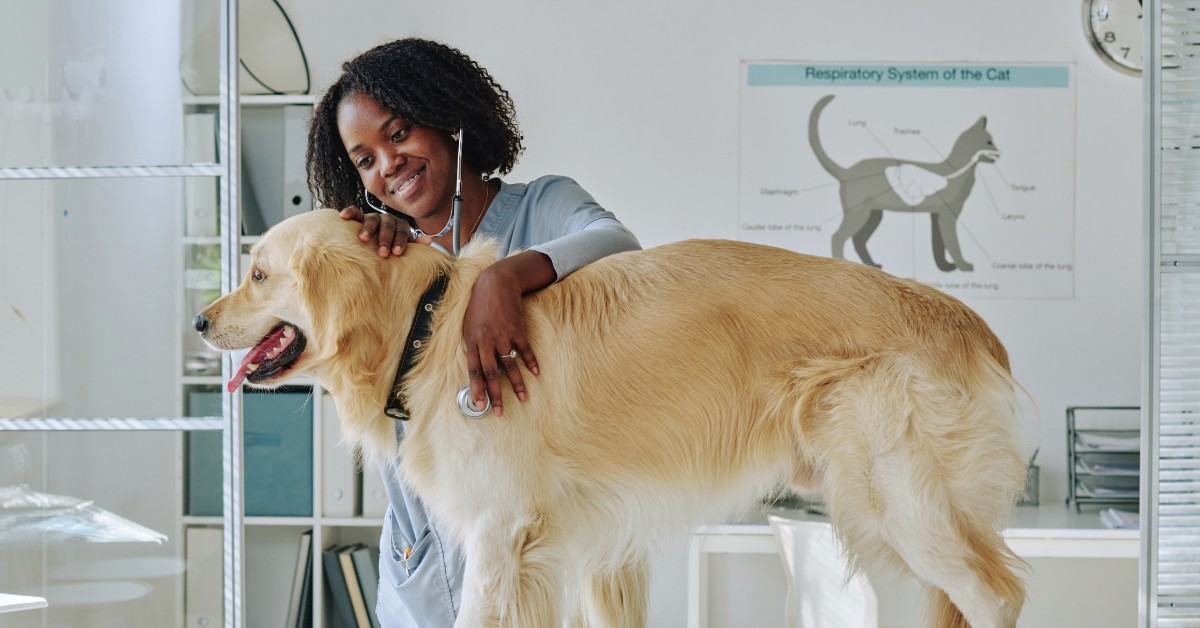What is a Veterinary Technician?

Veterinary technicians serve a variety of roles in addition to nursing duties. They act as patient advocates, phlebotomists, and technicians in radiology, laboratory, anesthesiology and surgery. These essential responsibilities, aside from those exclusively carried out by veterinarians, such as diagnosing diseases, conducting surgery, prescribing medication, and prognosis, are all things that veterinary technicians are trained to do to ensure the efficient running of a veterinary hospital.
Veterinary technicians are required to complete formal training that can be earned via an associate’s degree in veterinary technology from a college accredited by the American Veterinary Medical Association (AVMA). Their academic curriculum spans a vast array of subjects that include:
- Animal anatomy and physiology
- Medical terminology
- Animal handling
- Nursing for animals
- Laboratory skills (such as urinalysis, hematology, microbiology)
- Medical dosage calculations
- Pharmacology
- Radiology
- Anesthesia
- Surgical nursing
After finishing a 18- to 36-month veterinary technology course, these professionals must also acquire a license by passing the Veterinary Technician National Exam (VTNE). While veterinary assistants provide some levels of patient care, many duties are legally restricted to licensed veterinary technicians who have the education and skills to provide a higher level of patient care.
What is a Typical Day for Vet Techs?
Typically, a veterinary technician’s routine involves multitasking and quickly moving from one activity to another in order to ensure each patient receives proper care.
During your pet’s office visit, a veterinary technician will take down the pet’s medical history, carry out a basic physical examination, and then assist in holding your pet while the veterinarian assesses their health. The veterinary technician will then get ready your pet’s medication and educate you on how to dispense the medication at home.
In the background, a team of veterinary technicians work tirelessly, assisting with lab work, X-rays, anesthesia, and surgical procedures. It is in the treatment area of the hospital that these technicians obtain samples from patients that are utilized for lab tests to aid in the identification of complex medical conditions. These tasks can involve drawing blood, collecting urine samples or moving the patient to gather fecal samples for examination. The prepared blood is then analyzed in-house by automated systems to detect conditions like infections, anemia, kidney and liver disease, thyroid deficiency among others. A veterinary technician may also be assigned to create a blood slide for microscopic evaluation, seeking any anomalies. Urine samples are treated to separate the liquid from the solid matter and examined under a microscope to reveal urinary tract infections, bladder stones, and kidney disease. The analysis of fecal matter may seem unpleasant, but it’s a necessary task as veterinary technicians meticulously inspect it for parasite eggs that could be causing a pet’s diarrhea.
Pets that require X-rays are in capable hands. The veterinary technicians measure the applicable body part, adjust the machine accurately, and carefully position the patient to provide a helpful diagnostic image. Equipment maintenance at the hospital, including the X-ray machine, is primarily undertaken by the veterinary technicians to ensure all systems are operational for pet diagnosis.
During anesthetic procedures on a pet, a vet tech will establish an intravenous line and calibrate the accurate volume of such liquids. Their responsibilities also involve measuring and distributing the right quantity of anesthetic to induce unconsciousness. When the pet is peacefully sedated, the vet tech continues to prepare it for surgery by inserting a breathing tube for the required oxygen and anesthetic gas. Throughout the operation, the vet tech stays close by, tracking anesthetic concentration and vital signals to maintain a secure anesthetic state. They also aid in the animal’s recovery, ensuring it stays warm and content as consciousness is gradually restored.
In the course of surgical operating procedures, a vet tech will clip the animal’s fur and sterilize the surgical region meticulously. The necessary sterilized tools and apparatus are also prepared by them. They remain present throughout the surgery, assisting the vet by preparing items quickly, handing over tools, and taking care of equipment such as lasers, cautery, and suction units. After the surgery, they ensure that all instrumentations and equipment are cleansed and sterilized.
This brief summary merely touches on a few tasks that a vet tech executes every day, showcasing their significant contribution to a smooth-running vet clinic. Veterinary technicians often cope with extended, physically draining work hours. Nevertheless, they show up each day, joyfully committed to their passion for helping animals.






